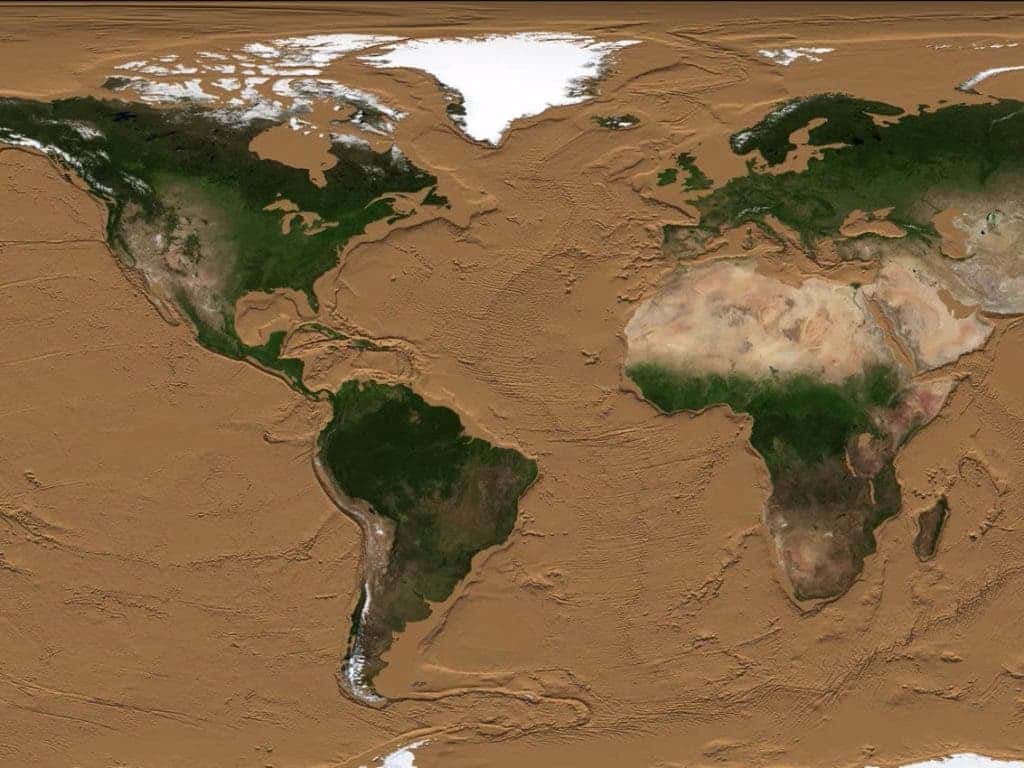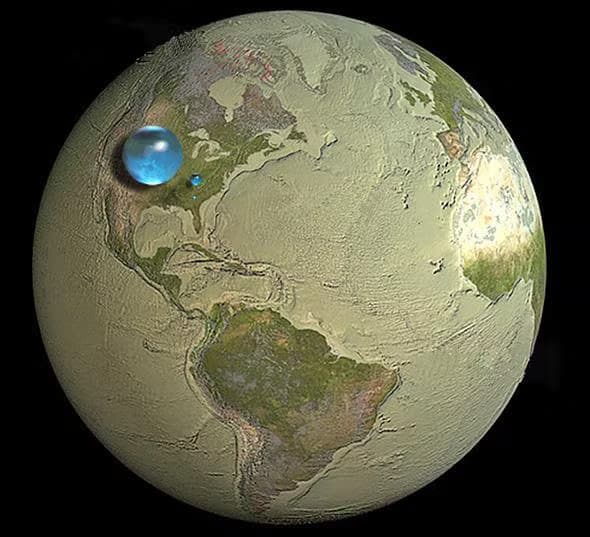What would the Earth look like without all its vast oceans, great lakes, and meandering rivers? Surprisingly mountainous, simulations reveal.

The following animated simulation was produced by planetary scientist James O’Donoghue, formerly at NASA and currently working for the Japanese space agency (JAXA). O’Donoghue worked from a video created by NASA physicist and animator Horace Mitchell back in 2008, editing its timing and adding in a tracker to showcase how much water was drained throughout the animation.
All in all, the video is a great way to showcase Earth’s underwater mountain ranges — the longest ones in the world — and the now-submerged paths that took humanity across the continents.
Sans water
“I slowed down the start since, rather surprisingly, there’s a lot of undersea landscape instantly revealed in the first tens of meters,” O’Donoghue told Business Insider.
The landscapes O’Donoghue mentions here are the continental shelves and undersea edges of each continent. These are swathes of land with higher average altitudes than the rest of the ocean floor which surround the continents — they represent the transitional landscape between dry land and the deep abyss.
The land bridges that early humans used to migrate from continent to continent are part of these raised areas. They’re submerged right now but tens of thousands of years ago, when ocean levels were much lower due to an ice age that created huge volumes of ice at the poles, they were raised enough to walk across. In those days, you could just walk from Europe to the UK, to Alaska from Siberia, or from Australia to the many islands surrounding the land down under.
“Each of these links enabled humans to migrate, and when the ice age ended, the water sort of sealed them in,” O’Donoghue adds.
But the oceans are hiding more than the movements of our ancestors. Earth’s longest chains of mountains appear in the video once sea levels have dropped by 2,000 to 3,000 meters. These sunken mountains are known as mid-ocean ridges, and form in the areas where tectonic plates butt heads. Earth’s deepest areas also make an appearance — once all the water is taken away, understandably.
These deep-ocean trenches form where tectonic plates move away from one another, creating deep gorges where magma pushes up from the Earth’s interior to generate fresh crust. To give you an idea of just how deep these gorges are, the Mariana Trench first pops up after 6,000 meters of water are removed in the video; however, its bottom only becomes visible after another 5,000-or-so meters.
“I like how this animation reveals that the ocean floor is just as variable and interesting in its geology as the continents,” O’Donoghue concludes.
Around two-thirds of the planet is covered by water. Since we don’t really have many opportunities to see the ocean floor, it is commonly imagined as a vast, flat, featureless expanse. But O’Donoghue’s work showcases the richness of underwater landscapes, and reminds us that the bottom of the ocean isn’t a boring place — it’s one of the most spectacular and untouched frontiers left on Earth.
This isn’t the only simulation showcasing Earth without water. For instance, this amazing interactive map of the planet allows you to navigate to any region of the world and see what it looks like without any drop of water.

Also, the United States Geological Survey and the Woods Hole Oceanographic Institution produced their own simulation of a water-less Earth. The static image above shows what Earth looks like without any drop of water in a view that faces the Americas. The big blue drop is the size of the sphere you’d get if you extracted all the Earth’s ocean water, while the smaller drop corresponds to the volume of water contained in all the world’s lakes, swamps, aquifers, and rivers.






